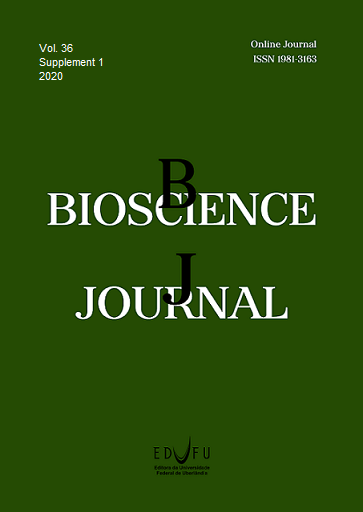Canola agronomic performance in three sowing dates in Jataí-GO
DOI:
https://doi.org/10.14393/BJ-v36n0a2020-48258Palavras-chave:
Brassica napus L. var oleífera, Phenology, Productivity, TropicalizationResumo
Canola (Brassica napus L. var oleifera) is a potential crop due to the growing world demand for vegetable oil. This work aims to evaluate the performance of five canola hybrids in three sowing dates in Jataí-GO. The experiment was conducted in the year of 2017, in a randomized block design, with subdivided plots and four replications. Plots were composed by three sowing dates (03/03, 03/10 and 03/17) and subplots by the canola hybrids Hyola 50, Hyola 61, Hyola 433, Hyola 571CL and Hyola 575CL. Seedling emergence, inicial and final plant population, flowering, maturation, plant height, plant survival index and grain yield were evaluated. The thermal sum calculation was performed with the phenological data. Results were submitted to analysis of variance and means were compared by Scott Knott test at 5% of probability. The plants survival index highlighted Hyola 433, Hyola 571CL and Hyola 575CL hybrids. Grain yield varied according to hybrid and sowing date. In the edaphoclimatic conditions of this study, in the year of 2017, the best agronomic performance was observed in the first sowing date for the canola hybrids Hyola 433 and Hyola 575CL and in the second sowing date for the canola hybrid Hyola 571CL.
Downloads
Downloads
Publicado
Como Citar
Edição
Seção
Licença
Copyright (c) 2020 Raissa Macedo Assis, Flavia Andrea Nery Silva, Luciana Celeste Carneiro, Givanildo Zildo da Silva, Simério Carlos Silva Cruz, Carla Gomes Machado

Este trabalho está licenciado sob uma licença Creative Commons Attribution 4.0 International License.






